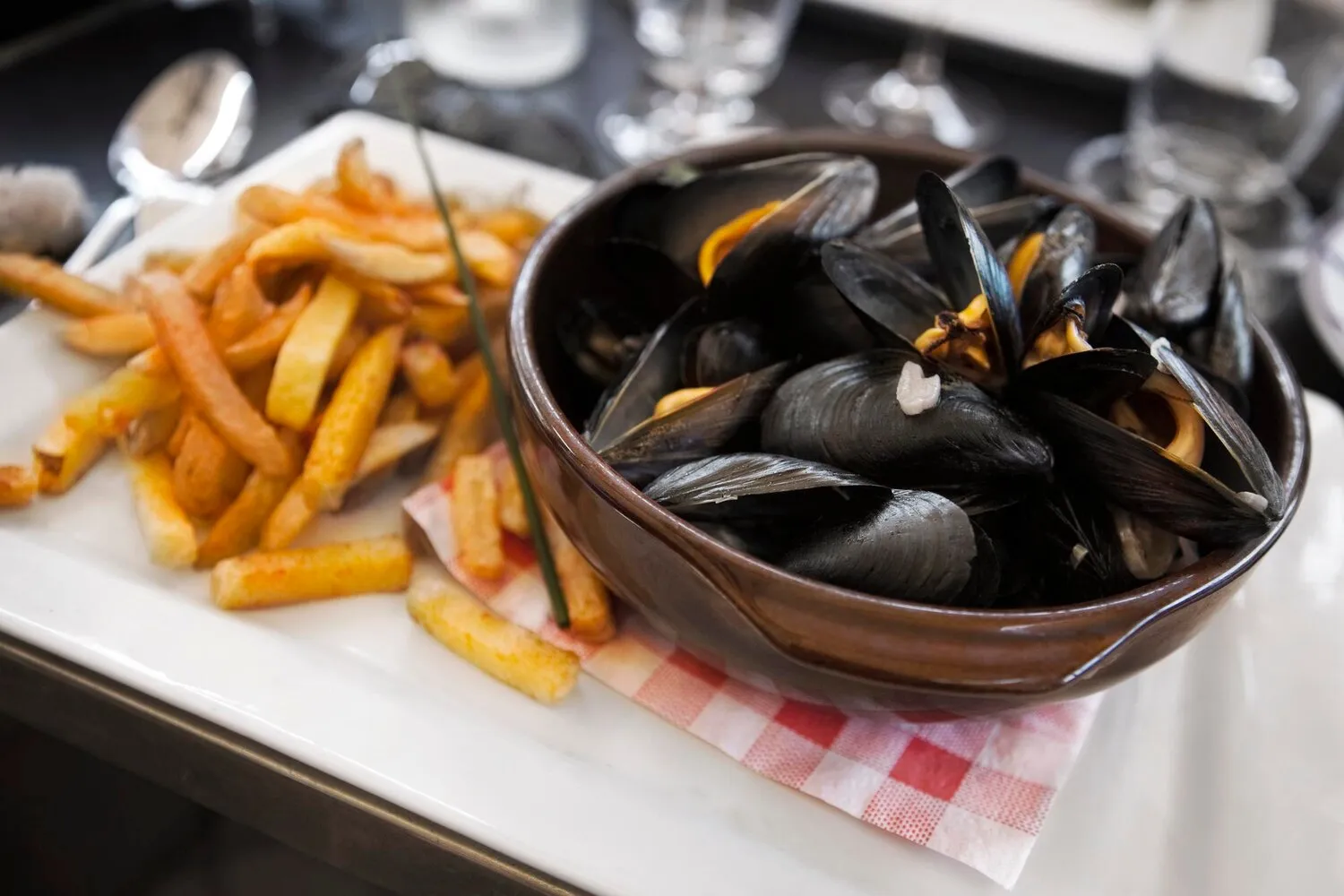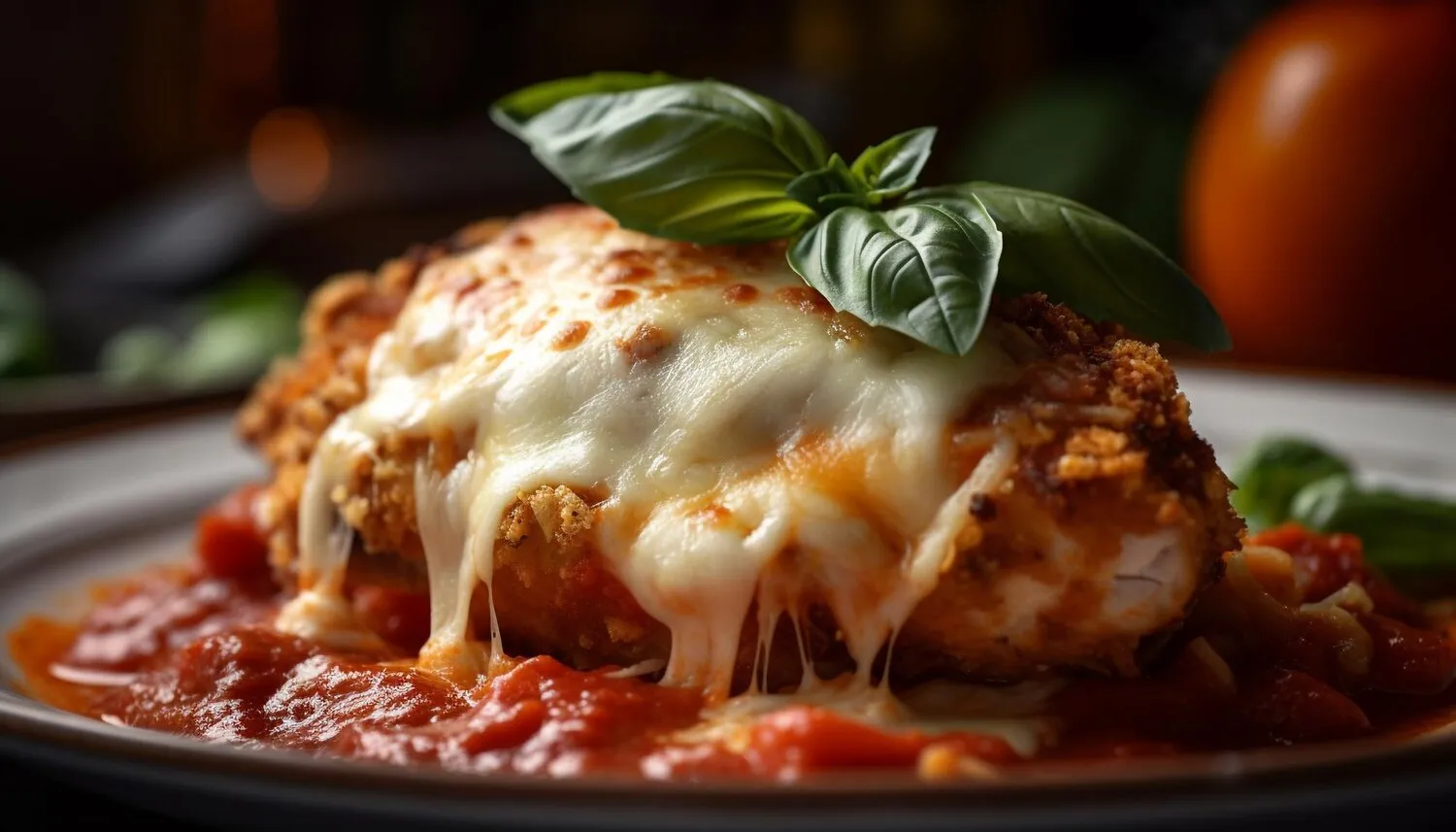
Moules Frites
Classic Belgian dish of mussels cooked in white wine, herbs, and vegetables, served with crispy fries.
Nutrition Facts
* The % Daily Value (DV) tells you how much a nutrient in a serving of food contributes to a daily diet. 2,000 calories a day is used for general nutrition advice.
While the exact origins are debated, Moules Frites likely emerged in Belgium during the late 19th or early 20th century. Mussels were a readily available and affordable food source along the Belgian coast, and the combination with fried potatoes, a popular Belgian street food, proved to be a winning culinary pairing. Some attribute its invention specifically to Brussels.
Moules Frites is considered a national dish of Belgium and holds a prominent place in Belgian cuisine and social dining experiences.
Social Gathering
Moules Frites is often enjoyed in casual settings, like brasseries and bistros, and is meant to be shared. The act of eating mussels from their shells with your hands fosters a sense of community and relaxed enjoyment.
Variations and Regional Differences
While the classic preparation involves white wine, garlic, and herbs, variations exist. Some regions use beer instead of white wine (Moules à la Bière), while others incorporate cream, mustard, or different herbs and spices. This regional diversity contributes to the dish's enduring appeal.
National Pride
Moules Frites is a symbol of Belgian culinary identity, celebrated in festivals and readily available throughout the country. It represents the country's ability to transform simple ingredients into a delicious and satisfying meal.
Moules Frites is a harmonious blend of briny, savory, and creamy flavors, balanced by the crispy, salty taste of perfectly fried potatoes.
The mussels themselves offer a distinctly oceanic, slightly sweet flavor. The white wine broth, infused with aromatics like shallots, garlic, celery, and herbs (often thyme or parsley), contributes a savory, complex base note. Butter or cream, frequently added, enriches the sauce, lending a smooth, velvety texture and a decadent flavor. The fries, ideally twice-fried, provide a salty, crispy counterpoint to the rich mussels and broth.
Mussel Selection and Preparation
Ensure the mussels are fresh and alive. Discard any mussels that are open before cooking and do not close when tapped. Remove any beards (the fibrous strands that attach the mussels to surfaces) before cooking.
Perfect Fries
Use starchy potatoes, such as Russets or Bintjes (if available). Double-fry the potatoes for optimal crispiness: once at a lower temperature to cook through, and again at a higher temperature to achieve a golden-brown color and crispy exterior. Season generously with salt immediately after frying.
Broth Consistency
Don't overcook the mussels, as they will become rubbery. Cook them just until they open. If the broth is too thin, you can reduce it slightly after the mussels are cooked. Some cooks use a cornstarch slurry for added thickness, however this changes the texture and is generally not recommended.
Serving and Enjoying
Serve the Moules Frites hot, with plenty of broth for dipping the fries. Provide an empty bowl for the shells. Many restaurants will also offer a large spoon specifically for scooping the sauce. Enjoy with a Belgian beer!
Explore additional Classic dishes and restaurants
Explore ClassicDiscover top dining spots and culinary experiences in Brussel.
Explore BrusselLearn more about the food culture, restaurant scene, and culinary heritage of Belgium.
Explore Belgium
